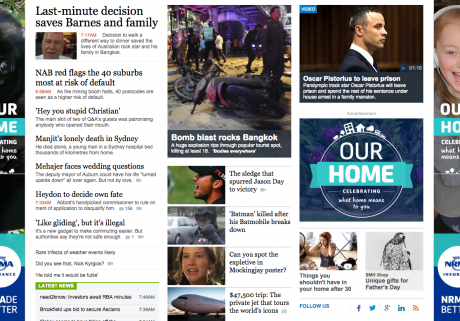Product Management
Read our post below on What Digital Strategy is, or just watch our 90 second explainer video at bottom!When people ask what we do (and what is digital strategy) we typically get a lot of blank stares, nodding heads with glazed looks or outright looks of confusion followed by the tentative question – “So what does that mean exactly?”. Well it means a lot of things to different people but it boils down to this…
Digital Strategy is a plan which you can follow that will help you to reach your business goals through use of technology. This plan will maximise the use of all of your online assets (your website, social accounts and advertising) to give you the biggest benefits in the shortest possible time (the best bang for your buck so to speak).
The Analogy
We have a lot of experience in real estate, and that’s particularly useful for giving us this analogy: Don’t confuse strategy with tactical campaigns, think of it like this, if you were building a house, before you start you need to survey the land and create a floorplan (that’s your strategy) and when you get going you’ll begin to decide what you want in each room (those are your tactical campaigns).Digital Strategy is similar to digital product management in that it is all about prioritising changes based on business value – making sure that you are working on the highest priority improvements at any given time. In organisations who truly adopt digital product management, this means reviewing all of that products suggested improvements – not just the ones that touch the website.
Knowing What To Focus On
The core idea with looking at this plan as a holistic piece is that what you need most may differ depending on your business goals. For example, at a high level: if you are a consumer facing retail brand, with no e-commerce, your goal may be brand awareness, to get people informed of your product so that they go in store looking for it. In this instance, your targeted behavioural and demographic advertising is more important than your website user journey.Look at it another way, imagine your online assets are like football players on a field: SEO is midfield, UX is defence, and Paid Media is a forward etc. In isolation, these players are not much use, they require elements of the others in order to score goals. When you are playing, you need to know the opposition team’s strengths and weaknesses, and which players to target – which may use different elements of your team to achieve your goal.
Digital Marketing Strategy is exactly the same, let all the players work together, but know which ones to focus your effort on for a particular game. If you’re new to this concept, you should start by establishing what your business goals are – you need to know where you are going before you leave to get there.
Creating Your Map
Once you have this down, you then look at all elements of online marketing to establish what will work best. Then you map it out the same way you would any journey. If you know how to drive then you’re ready to set off. If you don’t know the ins and outs of how to go about reaching your goals we can help – we can teach you how to drive there, so that in future you know the mechanics of how it all works.Lots of agencies these days offer SEO, UX, Social and Paid Media services in isolation but we believe you’re best to take the holistic approach to ensure you’re focussing on the changes that will effectively bring you to your business goals. Work with a company who actually cares about the result and will continue to give you ongoing support after the initial strategy has been developed. After all, you need to ensure your strategy is performing and adapts to changes in technology and marketing.


